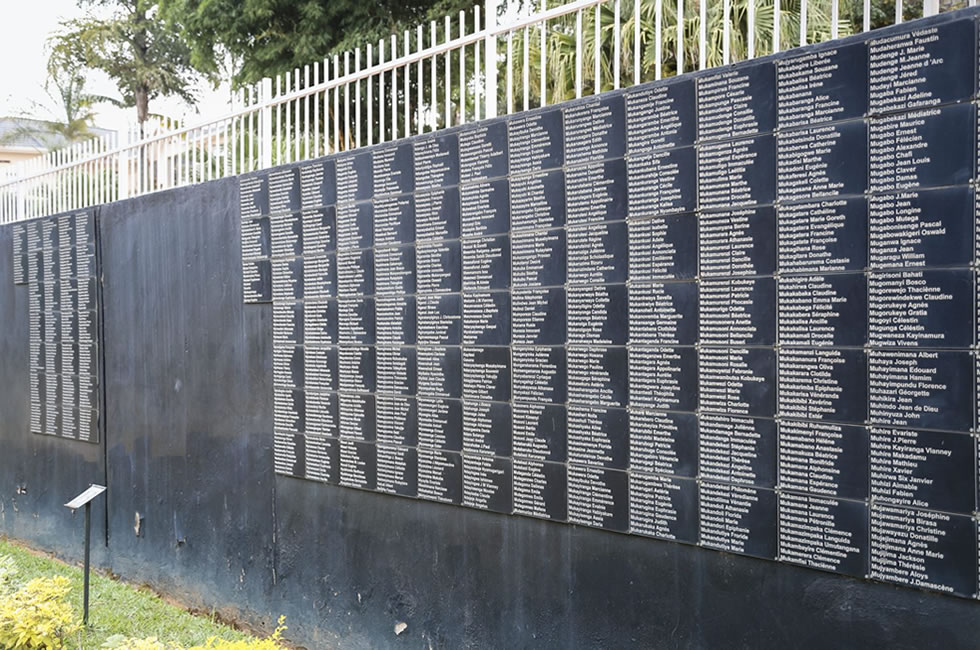
Inside Kigali Genocide Memorial: A Sobering, Insightful Experience
Kigali Genocide Memorial Centre is the final resting place for more than 250,000 victims of the 1994 genocide. It honours the memory of more than one million Rwandans killed in 1994 through education and peace building.
A tour to the memorial site, as I recently did, not only opens your eyes to the length man can go to achieve his own nefarious objectives, but also how the remains of the victims of the genocide are well-preserved for posterity.
The imposing building itself is an architectural wonder — a perfect resting place for the fatal victims of the genocide. More so, it is a place where the rich albeit sad history of the genocide is well documented for posterity. The building itself kind of tells you, “Never Again”.
As I gathered, the memorial was opened officially on the 10th anniversary of the Rwandan genocide on April 7, 2004. This, again, is a burial site constructed to honour some 250,000 people who lost their lives during the genocide. The planning plus management was, and is still handled, by the UK-based charity organisation called Aegis Trust, in collaboration with local authorities.
Aegis, a term that stands for ‘trust’ or ‘shield’, is an organisation campaigning against crimes against humanity and genocide. It was established in 2000 and its activities include policy, research, remembrance, education, media work and campaigns that involve humanitarian support for the victims.
The memorial itself comprises of the main historical exhibition (and here you are going to walk through a corridor where you’ll get to read about the beginning of the genocide), a children’s memorial exhibition, plus an exhibition on comparative genocide known as ‘Wasted Lives.’
It also has over four acres of memorial gardens that contain 10 mass graves, as well as the National Genocide Documentation Centre.
The magnificent principal building was structured by design to represent three different epochs: the pristine period before, during and after the genocide.
Our History Room
The main building has three exhibitions. The first room is entitled, ‘Our History.” It introduces the world, and everybody who visits the memorial centre, to the Rwandan history with large pictures showing individuals of all ages, showcasing the cultural lifestyle of Rwanda prior to the genocide, women breastfeeding their children and old men playing their traditional games, different attires, lifestyles, and even an almost life-size image of Rwandan King Yuhi V Musinga imposingly standing tall and proud.
Besides the images is a stanza that says, “This is about our past and our future, our nightmares and our dreams, our fear and our hope, which is why we begin where we end, with the country we love.”
As you walk silently (yes, you have to be solemn here) from one showroom to another through a series of corridors that are lined with several short notes with detailed information, there’s a feeling of walking on a real journey, as though you are experiencing the horrible genocide right through your own eyes.
Original and unedited videos of individuals being massacred (oh, what a terror!), testimonies of perpetrators and survivors as well as some Gacaca Court proceedings are conspicuously mounted on the concrete walls. Alongside these is a timeline of images of Rwanda’s (dark) history.
From “Our History Room,” you’re then led to a room called “Descent to Genocide”. This is a dimly lit room but full of graphic pictures of bones plus dead bodies, fatal victims of the genocide all over the country.
On one side of the wall stands 3ft image of mass grave at Kigali St. Famile, where over 30,000 genocide victims were burnt alive, and with comprehensive info on how Rwandan priests — meant to be custodians of souls — were instead responsible for the massacre of a host of Tutsis who had sought refuge in their churches.
A new Rwanda looking to the future
It is not over. You walk as if turning the next page in a tragic storybook, eager to reach that part where the villain is caught and forced to face justice, and thinking that the worst is behind you, until you arrive at the room called “After the Genocide”.
But even before crossing over, the word ‘Reactions’ is fully emblazoned in big capital letters. There’s a photo worth a thousand words; a scene where many children are gathered together, all staring into the camera, all orphans with little hope for the future.
From this, you are led to a circular corridor where a renowned artist, Ardyn Halter, created two stained glass windows that not only show a link between the survivors of the atrocity and Rwanda, but also the start of the genocide with skulls engraved at the bottom to the top, which simply means a new Rwanda looking to the future.
Then you are not going to miss rooms where individuals have placed images of their loved ones, a room solely dedicated to innocent children who lost their lives during the genocide, and a quote reading, “We did not make ourselves orphans”. At the end of your tour, you can now enter into the beautiful and intricate memorial gardens.
A sense of serenity, peace and calm
The gardens have fountains with a rose garden, where each rose symbolises a loved one lost but now blossoming in the bright future of what Rwanda currently is. These gardens were designed in such a way that individuals could sit outside in utter reflection. A sense of serenity, peace and calm suddenly grips you as you walk through the gardens.
Then there’s a sense of hope for the future, since everywhere is green, and everything is budding as though each leaf presents some sense of hope — a new and bright future. Your tour is lastly going to lead you to the Documentation Centre.
This centre is a place where several youths come together to debate, learn, acquire knowledge, as well as deal with issues on how they may help to prevent genocides, like what happened to Rwanda in 1994.
Then there are programmes the memorial is establishing for all to benefit from the development center, basing its major objective on unity and reconciliation. This is a place where, indeed, the fatal victims of the genocide have found a home.
As the memorial centre’s management aptly states, “these are everyone’s places as much as Rwanda’s. They should remain as a warning for future generations, both in Rwanda and in the rest of the world about the consequences of hatred and division.”
Read More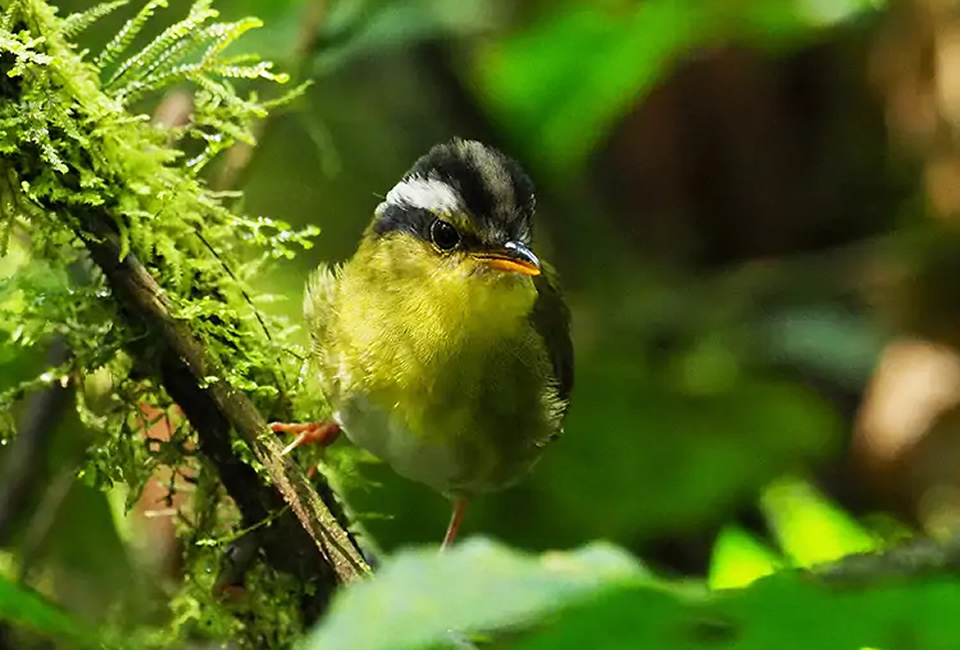
Best Places to Go Bird Watching in Rwanda
Rwanda is blessed to have the shelter of the highest population of birds in the world; it’s also ranked among the best 5 destinations in the entire world for tourists searching for the best birding tour in Rwanda. Rwanda is geographically a small land locked nation perched in the Albertine Rift valley with its dense forested and mountainous nature that avail great and long lasting memorable wildlife experiences anyone wouldn’t want to miss in life.
Rwanda with its small size has a staggering 700 bird species that quench the thirst of anyone looking for great birding safaris and experiences in Africa.
Rwanda has 7 favorite important bird watching areas, which include 3 national parks, – Volcanoes national park, Akagera national park,
Nyungwe national park, Rugezi swamp, Akagera swamps, Nyabarongo and Cyamudongo forest. These birds include Grey crowned crane, papyrus Gonoleck, Kungwe apalis, Bennettis wood pecker, stripe breasted tit, yellow-eyed black flycatcher, Cinnynis, white-tailed blue fly catcher, shoebill stork, tropical Boubou, regular sunrise bird, bronzy sun bird, among others.
Birding At Lake Ihema, Akagera National Park
Akagera national park is a small piece of paradise perched on the Rwanda-Tanzania that provides wildlife safaris in Rwanda that travellers long for. The Park stands as Rwanda’s most spectacular site for birders as it habours several endemic as well as migratory bird species and other unique wildlife species. It is home to over 520 species of birds that dominate this place, including forest, savannah, wetlands, and montane species.
Lake Ihema is home to the rare shoe bill stork; therefore this place gives a clear view of these beautiful birds since it habours a mixture of different acacia and papyrus species, including the olive back.
Other species common in Akagera national park include; the gorgeous black headed Gonolek, the grey hornbill, lilac-breasted roller, the crested barbet, Heuglin’s robin-chat and Ross’s Turaco, among others.
Birding In Nyungwe Forest National Park
This is Rwanda’s most fabulous bird watching site, and it is home to approximately 310 bird species that have been recorded, reflecting a wide habitat diversity and altitudinal range due to its dense forested nature. It’s very famous for its vegetation cover as well as being a home to many different bird species as compared to other national parks.
This wonderful birding area lies west of Butare, with the Butare to Cyangugu road passing straight through the middle, providing excellent roadside birding adventure.
Nyungwe habours a variety of Albertine Rift endemics, including seven of the 12 species of Soricidae, one species of bat – Rousettus lanosus, 5 of 12 species of Muridae and the chameleon Chamaeleo johnstoni, two species of squirrels,- Funisciurus carruthersi and Heliosciurus ruwenzori. And an amphibian that is endemic to Nyungwe – the caecilian Boulengerula fischeri. Two species of butterfly are endemic to Nyungwe – Bebearia dowsetti and Acraea turlini while Papilio leucotaenia restricted to a small area of the Albertine Rift occurs commonly in Nyungwe.
Birding In Nyabarongo River
It’s a protected area in Rwanda, covering 142.62km2, located in the south east of the country, south of Kigali, and includes swamps and marshes in parts of flood plain of river Nyabarongo, the longest river in Rwanda. It provides a safe haven for some of the globally threatened bird species namely; the Madagascar Squacco heron, papyrus Gonolek, Carruthers, Sisticola, white- winged scrub-warbler.
Other places where these birds can be found are; Cyamudongo forest, Rugezi among others, for anyone who wants to get an unforgettable biding experience in Rwanda.
Read More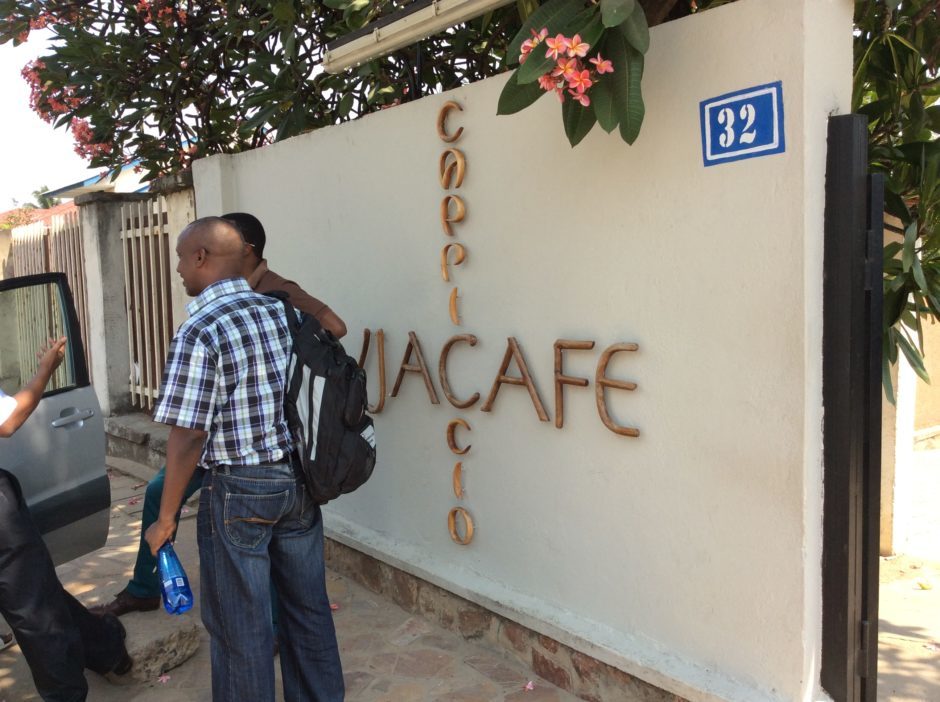
Buja Café’s Akimana is bringing back her ‘savoir faire’ to her country
Buja Café
Interview de Cynthia Akimana
Cynthia Akimana est une jeune burundaise qui a voyagé et travaillé dans plusieurs endroits de la planète. Elle ramène dans ses bagages son savoir- faire à Bujumbura…
Depuis quand es-tu rentrée au Burundi et que t’ont apporté tes voyages à travers le monde ? La transmission de tes expériences qui font le succès de ce paradis qu’est le Bujacafé?
Je suis rentrée depuis 2011 après avoir séjourné 23 années successivement à Lausanne (Suisse), Toronto (Canada) et Dubaï (EAU). Mon souhait de revenir au Burundi (projet mûrement réfléchi) était de pouvoir transmettre le savoir-faire que j’ai acquis durant ma carrière hôtelière à l’extérieur du pays et promouvoir une nouvelle gamme de services à la clientèle burundaise.
Comment est né le Bujacafé?
L’idée de Bujacafé est venue de mon associé Jules Katabizi, un entrepreneur passionné par le café. Il est venu me trouver à Gitega où j’effectuais une consultance dans le domaine de l’hôtellerie. Après avoir discuté du projet auquel j’ai de suite adhéré, je l’ai rejoint à Bujumbura pour démarrer le projet. C’était un « match made from Heaven » d’un visionnaire et une gourou de l’hôtellerie. De là est né Bujacafé et nous avons ouvert nos portes le 8 août 2013.
Comment pourrait-on te présenter? Une jeune femme passionnée et qui réussit tout ce qu’elle fait, avec la ‘Positive Attitude’ ?
Simplement, une jeune Burundaise, passionnée par l’hôtellerie qui a eu la chance d’élargir son savoir dans 3 zones différentes (Europe, Amérique et Moyen-Orient), mais aussi par le contact avec les autres. Cette passion, je la porte fièrement dans mon cœur et elle correspond à ma nature. Je suis une personne joyeuse et conviviale, qui a réussi à créer avec toute mon équipe une ambiance chaleureuse dans un endroit cossu.
Que pourrais-tu recommander à un jeune qui aimerait s’installer à son propre compte ?
Le Burundi est un pays où il y a encore beaucoup à faire. Je continue à encourager les jeunes Burundais qui sont à l’étranger à rentrer au pays pour que tous ensemble nous puissions reconstruire ce beau petit pays qu’est le nôtre et lui redonner le rang qu’il a jadis eu sur le plan économique. Mais il faut aimer son travail et s’y consacrer à fond.
Quelles sont tes passions mis à part le Bujacafé?
Je suis une personne très sociale et me réjouis de passer du temps avec des personnes qui me tiennent à cœur, sortir au restaurant, danser, voyager, aller à la découverte autour du monde sont une partie de mes passions.
Quelles sont les surprises que le Bujacafé prévoit pour les fêtes de fin d’année et pour la Saint Valentin ?
On prépare de bonnes choses pour les fêtes de Noël et du Nouvel An dont la fameuse bûche de Noël bien sûr ! Et pour la Saint-Valentin, je pense que l’ambiance qu’on a essayé de créer dans notre jardin vous offre Saint-Valentin toute l’année.
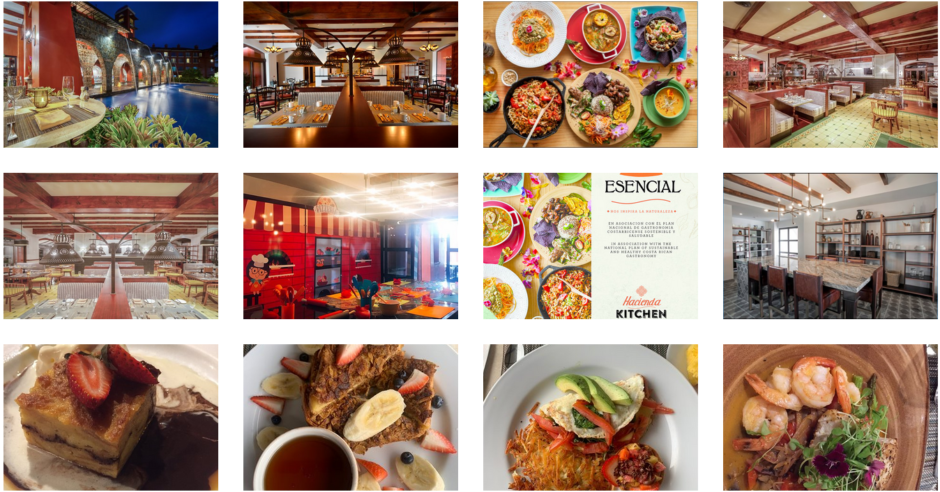
L’HACIENDA: Where creative cooking meets great ambience in Burundi
For a new restaurant to take Buja by storm, there has to be something unique about it. After all, Buja is a city of great food. And yet, right in the centre of town, along Boulevard de l’Uprona, one restaurant has done just that-taken the city by storm. Its name? L’Hacienda.
Every evening, between 80 and 100 travellers, foodies and just about any group of friends will stream into Bujumbura’s latest culinary obsession as if drawn by some inner magic.
But what is it exactly that draws crowds of smiling guests to L’Hacienda?
Maybe it’s the architecture of the place.
The stylish design of the property, with its numerous prominent arches, evokes the architecture of a Spanish Hacienda after which the restaurant takes its name. The smooth curves of the arches give it an open and inviting air. Add to that the great, laid back ambience of the place, with its open-air seating and gushing fountain outside, the soothing tones of the walls and the beautiful art pieces in the interior of the restaurant, and you have the perfect hangout.
The superfast Wi-Fi also makes it ideal for those who (like me) would love to be able to send out quick emails while having a mid-morning coffee or enjoying that late afternoon beer.
Yet these things alone- decor, wireless internet and friendly staff might be found in any number of places.
What sets L’Hacienda apart?
One reason I think L’Hacienda is such a success is that the people behind it seem to work as a team. Owned by a Burundian, the business itself is managed by an amiable Belgian couple-Karim and Lyseth Jaffer. While Karim runs the kitchen, Lysbeth, mostly handles what might be called the externals of the place: decor, staff and communication. This way, they each utilise their individual strengths for the good of the business.
The second, more important reason, is certainly the food! After all, food is the soul of any restaurant, right? And this is precisely where L’Hacienda excels.
Meet the Chef
At the helm of the kitchen in L’Hacienda is a Belgian chef with the heritage of three continents running in his heart. Of Indian heritage, raised in Lubumbashi, having lived many years and married in Belgium, with a three-year stint in 1980s Rwanda, Karim Jaffer’s wide-ranging life experience expresses itself in the unique meals he prepares.
“I craft each meal to be a unique blend of my Indian, African and European culinary experience,” Karim told me in an interview.
The menu is varied and includes both the staples that any competent restaurant should have: standard coffees, spaghetti servings, pizzas and burgers; but also the “Spécialités du Chef” which features some signature dishes specially created by Karim to titillate and give the food lover a delightfully distinctive experience.
The typical meal will tend to merge staple Burundian or other African staples with a European delicacy and a touch of Indian spice and send your taste buds to gourmet heaven.
The staff were friendly enough when I went there and were generally quite willing to recommend some offerings on the menu that I found tasty.
Prices are on the upper side of the medium range by Buja standards but are well worth it considering the benefits.
Moreover, talking to Karim and Lysbeth, it was clear that they still have a number of plans in store to make l’Hacienda even more awesome than it already is; so whether you stay in Buja or are just passing briefly through, drop by sometime and spoil your taste buds to a rare treat!
Read More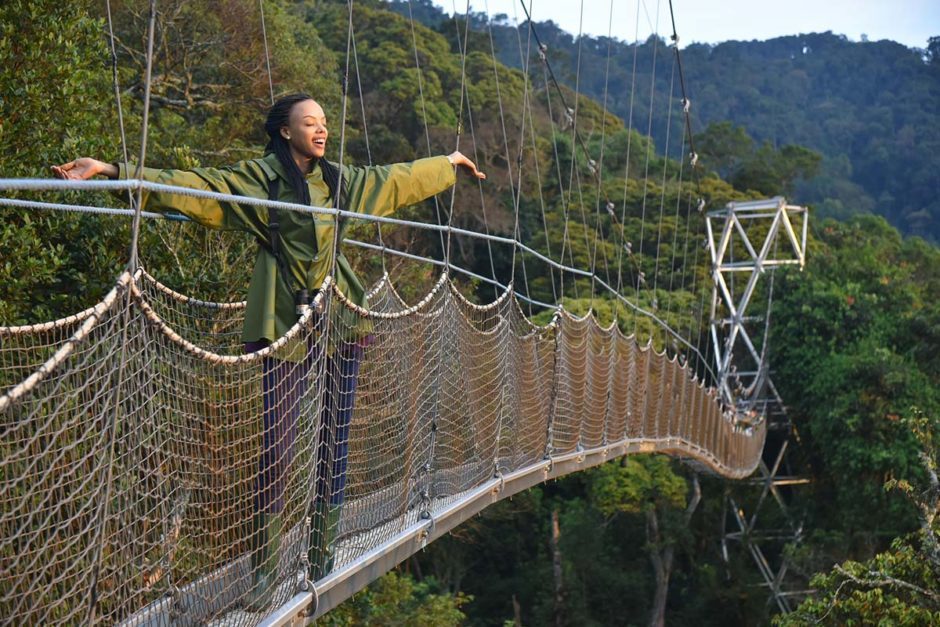
The Amazing Nyungwe’s Canopy Walk
Will give you the thrill of a lifetime!!! Nyungwe Forest National park is, without doubt, one of the reasons why Rwanda has lately become a top tourist destination the world over. A visit to this place should be among the things on your ‘To-Do List’ before this year ends. It is not only a place for relaxation but also one for adventure and insight into Rwanda’s unique beauty.
Nyungwe Forest is the largest protected mountain forest in Africa covering between 1600 and 2000 square meters; and, being a five-hour drive into the heart of Rwanda, the long drive to Nyungwe gives visitors a chance to drink in the country’s diverse scenery and impressive landscape en route to the main attraction. Once you get there, prepare yourself to embark on one of the most incredible adventures you will ever have: The Canopy Walk! Besides the beautiful scenery, huge, centuries-old trees, and extra-thick forest, this outstanding tropical forest is sheltered to a 200m Canopy Walkway that will give a thrill that can hardly be matched by anything else.
Getting to the Canopy is about 2 hours from the starting point at Uwinka Visitors center. This forest is on a mountain and so the hike down is quite slippery because of the mere fact the ground on which the tourist’s trek is wet and moist. Seeing the Canopy on arrival, especially for those afraid of heights, could be described as ‘The endless walk to Hell’. The bridge suspended between huge trees gives one a feel of fresh air, 60 meters above the forest floor. Besides the freshness in the air and magnificent aerial view of the trees, you will enjoy the sight of beautiful birds flying across as you enjoy the walk.
The Canopy Walk is a favorite activity for park visitors. It is one of those things you want to attempt before you die. Opened in 2010 it is the only one of its kind in East Africa and the third on the continent. The 90-meter long Canopy walkway offers unique face-to-face encounters with butterflies, colorful birds, and monkeys. Hardwood trees dominate the upper canopy while the lower part is beautified with a large selection of purple orchids and lush flora and fauna that flourish better in the higher altitudes.
Besides the Canopy Walk, the park offers a range of trails into different parts of the forests for avid hikers and occasional walkers. All the guided walks depart from the central Uwinka Reception center, the western Gisakura entrance, and the eastern Kitabi entrance. While the view may be better from above, this tourist attraction is equally fascinating from the forest floor. A network of over ten mud trails takes you deep into the heart of the forest park.
Finally, do reward yourself after a 10km hike with a visit to Nyungwe Forest’s beautiful Ishumo waterfall. It may be small in size, but this calm waterfall is striking in its own way and the breeze to which one is welcomed will feel like one of life’s simplest and greatest pleasures.
Read More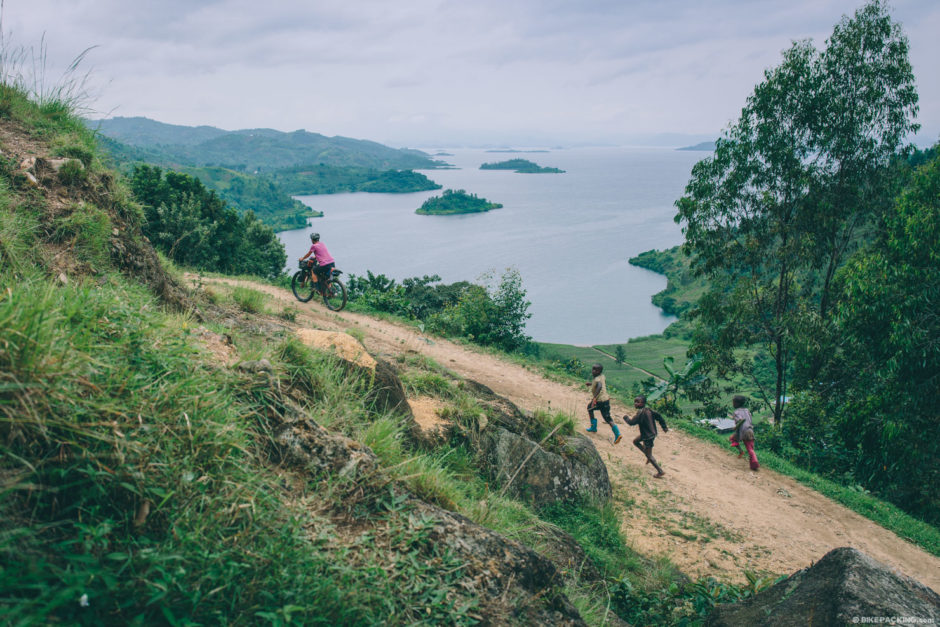
RWANDA’S NEW ‘CONGO NILE TRAIL’ –HIKING THROUGH RURAL AFRICA
Kilimanjaro and Mt. Kenya, treks into the Rwenzori Mountains, or hikes up Mt. Elgon have long been available, hiking across rural Africa has not. It is the first such trial of its
‘Before I explored the new Congo Nile Trail, at least the part from Kibuye to Gisenyi, questions were asked of my sanity, how anyone could walk across rural Africa, considering the presence of wild animals, opportunistic bandits, and reckless drivers ready to catapult one into the nearest ditch. Of course, I have dealt with questions of this nature for a long, but those ‘ignorant never seem to stop bringing that up. They also never deter me from doing something new, something others have not done yet but something I always feel others should do too, to gain the experience life’s memories are made of……………..
In the first part of the Congo-Nile trail which hugs the shores and mountains along Lake Kivu from Kamembe to Gisenyi. We talked about the newly introduced Congo Nile Trail. This is the second part of the trail Congo Nile Trail We had our 4×4’s in attendance at all times, being a media trip and trial run for the trail ahead of the official launch, but while on foot we could have crossed anywhere, some sections were a challenge for the cars. The route from Kinunu to Gisenyi, where the 72 wooden bridges and crossings are progressively being replaced with new concrete bridges, to the relief of the locals who no longer need to fear ‘their bridge’ being swept away.
In fact, many of them have been employed to actually work on the construction teams, generating some much-needed income for the local communities while substantially improving their local infrastructure and making their roads truly all-weather, all year round. Having the cars ‘around’ also helps to assist more quickly in case of a sprained ankle, or – when king – tend to the scratches and knocks sustained in a fall, and having a 4×4 ‘escort’ which carries the luggage and periodically teams up with the hikers, can be arranged by the trail guides and trip organizers at a cost of course.
The Congo Nile Trail is breaking new territory, breaking new ground, and while climbs up Kilimanjaro and Mt. Kenya, treks into the Rwenzori Mountains or hikes up Mt. Elgon have long been available, hiking across rural Africa has not. It is the first such trial of its kind in eastern Africa and runs along some of the most scenic parts of Rwanda, and the Democratic Republic of Congo is always within sight across the waters of Lake Kivu. RDB in conjunction with local communities has created a sure winner and I for one wish to come back and hike the sections of the trail not covered by this special trip.
And in closing some practical hints: good hiking boots are essential, as are rainskins because during my hike it rained every day, at times very heavily indeed. Waterproof backpacks are equally important, to avoid equipment or spare clothes getting wet. Umbrellas are not really suitable as hikers always need both hands free. Trips can be arranged through licensed tour operators or the Congo Nile Trail organization, which also attaches trained guides to the hikers. Information can be found via www.rwandatourism.com or via the RDB website www.rdb.rw.
And printed material including an excellent map is available while a dedicated website for the trail is about to be launched, soon after the trial itself was being formally declared open. Discover Rwanda’s hidden treasures via the Congo Nile Trail, the very latest tourist attraction to explore the country by hiking, biking, 4×4’ing, or boating. The spirit of Christmas at L’esperance; an orphanage with a difference.When on the newly created ‘Congo Nile Trail’ a few weeks ago, which hugs the shores and mountains along Lake Kivu from Kamembe to Gisenyi, a side trip to a unique orphanage, ‘L’Esperance’ in Kigarama, captured my attention and imagination to such an extent, that it has not left my mind since then. Over the holiday season, I was repeatedly thinking of those children, and their caregivers and foster parents, especially as Christmas Eve came calling. And when Christmas Day finally dawned, it reminded Amahoro Island’s landing.
Photo Prof. Dr. Wolfgang me of what I had seen there, and how like magically L’Esperance was gifted with the spirit of Christmas, seemingly for the entire year. Christmas, after all, is supposed to be a season of sharing, especially with the disadvantaged, the less fortunate, and those in greater need than oneself, and at L’Esperance that spirit was ever-present, even in November when I visited, and surely prevails throughout the year. Set high in the hills above Lake Kivu, this orphanage is unique in many ways, not the least for aiming to become self-sufficient in all their aspects of daily needs, although the Rwandan government has thankfully stepped in to absorb school and education fees for the children who found a home in the truest sense at L’Esperance.
At least 120 children and infants were at L’Esperance at the time I visited in November and we, I was part of a media invitational tour of the new ‘Congo Nile Trail’ just before it was officially launched, were received with such warmth and genuine affection, that there and then I decided that this was a story worth telling in greater detail. L’Esperance is part of a German-based NGO, Children’s Aid International, and came to Rwanda in 1995, the year after a gruesome genocide had killed more than 800,000 people and left tens of thousands of orphans in its wake. However, in the midst of this tragedy of epic proportions, the idea was conceived to bring L’Esperance to Rwanda and create a place of refuge, safety,
and caring love for those little ones who had survived, and yet unbeknown to many of them – due to their tender age – also had lost their entire families. Initially set up to cater for but 100 children and infants, L’Esperance is now the home to 128, some of them still there since they first were welcomed in 1995 as babies and toddlers while others have since then joined. Yet others have completed school, gone to university, graduated with honors, and are now ‘old boys and old girls’ of L’Esperance, the ONLY home they have ever known since a cruel fate had robbed them of their families in 1994.
Volunteers from around the world, the United States, the Netherlands, and even from Poland are giving their time and effort to work with the children and make their own personal contribution. The team at L’Esperance has led by self-professed ‘dictator’ Victor Monroy, who presented himself as anything but a dictator but a gifted communicator, able leader, and visionary head of the Kigarama orphanage. His intention is to create a totally self-sustained facility able to feed itself, educate the kids, and offer them the opportunity to ‘become anything they want to become, anything they want to be’ as he put it to me when we discussed his work. Given half a chance to talk about L’Esperance, Victor would launch into both histories as well as the future of the orphanage, all at once, buoyed by the chance to get the message out to the world what good has been achieved and how much more could be accomplished given the right support with the right tools, through donations aimed to expand and improve the existing facilities. And going by the impressive list of existing partners, he and his totally committed team of volunteers and staff have made an impression around the world.
Engineers without Borders – from the Johnson Space Centre in Texas and from Colorado University, The Manna Energy Foundation, United States, A Better World, Canada, Global Water Challenge, Washington DC, Catholic Relief Services, Birambye International, United States are just a few major names who have in the past and continue to assist L’Esperance at Kigarama to make certain that the children there not just have a chance of a productive future but are equipped to take such chances with both hands.
Set in more than 20 acres of fertile land, L’Esperance is growing all their fresh produce themselves, and having planted hundreds of avocado and mango trees are also able to sell to nearby markets, generating sustainable income for the orphanage which can then be used to purchase other items such as sugar, salt, cooking oil, detergents and a range of other goods needed every day to keep the ‘wheels turning’. 6 ‘houses’ are the ‘homes’ of the children, each one led by a member of staff who is the focal point and ‘mother and father’ to the kids, someone they can relate to and can conide in.
Read MorePREFER Women’s Soap Association
that does not have electricity or water availability for the residents. The majority of the population grows potatoes and cabbage that are sold in the Musanze market; for most this is their only source of income. The majority of households live on less than $200.00usd per year and are raising families that consist of more than 5 children.
27 women, who are dreaming of a brighter future for their children, decided to take fate into their own hands.
The women thought long and hard about what they could do. There were no jobs available to them, they had only so much land to cultivate, they did not have the necessary start-up cost to open a business of any kind, and they all have young children that they could not leave at home alone.
The women approached Poverty reduction, Education, and Family empowerment in Rwanda (PREFER), a Rwandese NGO based in Musanze District. Together the women and a representative from PREFER came up with the idea of making soap, and then proceeded to find the name of a qualified teacher, a list of necessary equipment, a location, and a budget. PREFER donated $1000.00usd for start-up costs and the women began their journey out of poverty.
These women, a mixture of widowed and married, formed their association, hired a teacher and during the next four months faithfully attended classes to learn how to make quality soap. Not surprisingly, all the women completed and passed their course. They were determined to make a success of their new endeavor and all contributed 100% of their effort. The graduation ceremony was a joyous celebration. The majority of these women, born and raised in the village, have had minimal schooling, if any. This was the first certificate they had ever received and the first time they had ever been recognized for their achievements.
The women have rented a small shop from a local businesswoman, purchased the necessary equipment, and begun to make soap.
They regularly sell to friends, family, and neighbors in the community, but just recently they obtained decorator molds and have made soap available to visitors in Rwanda. You can find PREFER Women’s Soap Association soap, to purchase, at their shop in Gushangiro, Karibu Gift Shop in Ruhengeri, and hotel gift shops in Musanze district.
PREFER is a Rwandan registered NGO operating a number of programs including distributing a goat into a vulnerable family, enabling the family to sell the offspring for income for schooling expenses; home repairs for widows and teen head of households; and PREFER pre-school, located in Gushangiro, offering free education to 152 children ranging in ages from 18 months to 5 years old. If you would like to contact PREFER you may do so by contacting Cathy Emmerson BP 37 Ruhengeri, Rwanda, or thru email povertyreductionrwanda@yahoo.com
Read More